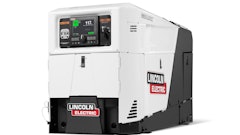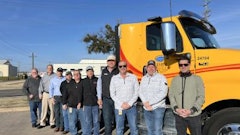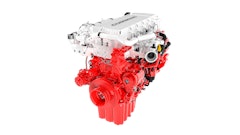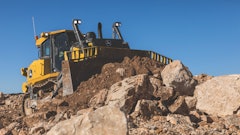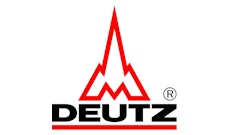

Captain’s starlog, February 2014: we journey into the jungle to the European Space Agency (ESA) spaceport in Kourou, French Guiana, where a pair of Volvo Penta engines is hard at work powering a machine that transports solid rocket fuel boosters to the Ariane 5 main stage launcher.
However, our story begins not in the South American tropics but far across the ocean in Italy. Nestled in the tiny town of Borgo San Dalmazzo at the foot of the Alps, 100 km outside Turin, is Industrie Cometto, an equipment manufacturer that has built semi-trailers, modular trailers and self-propelled haulers since 1955. Its products, manufactured on a per-project basis, can move an impressive amount of weight: the largest trailers stretch up to 60 meters, with 40 rows of wheels, and can move a 7,000-tonne ship. The company has patented its steering and suspension system, which is first in its class for load capability, with each axle able to bear up to 60 tonnes.
“The strength of Cometto machines is in the design,” says Luigi Terzuolo, Technical Director of Cometto. “We design all parts of these machines in-house — including the software used to steer our remote-controlled units. We know our products inside and out, so we can customize them as requested.”
Intergalactic machines
Cometto began working with ESA in 1990, when the company delivered a hauler, the AIT200, to move rocket boosters around the Guianese spaceport. ESA launches spacecraft for telecoms, weather monitoring and satellite purposes — and Kourou’s location 500 km north of the equator is ideal, with the Earth’s rotation providing the spacecraft some added velocity.
With the AIT200 beginning to show its age, Cometto has just put the finishing touches on the AIT250 Fardier. The 16.8-meter-long, 5.5-meter-wide unit will ship next month to Kourou, where it will be used to move the bottom two segments of the rocket boosters. Hydraulically powered for excellent traction, the AIT250 can move backward and forward or side to side — making an otherwise long and unwieldy machine surprisingly maneuverable. Each segment weighs in at 150 tonnes, measures 15 meters long and contains 107 tonnes of solid rocket propellant to launch the Ariane 5 main stage spacecraft. The fuel doesn’t last long; the Ariane 5 burns through the propellant in less than two and a half minutes as it shoots into space at a rate of two kilometers per second.
Not only is the cargo enormous, but working conditions in Kourou can be treacherous. Situated between the Atlantic Coast and a dense swathe of rainforest, the area is hot, humid and salty, and the distinct possibility of a lightning strike makes hauling the fuel-filled segments very dangerous business indeed.
A heavy (pay)load
Because the AIT250 will bear such heavy and volatile loads, it was crucial that Cometto use engines that were reliable and tough — in addition to being quiet and fuel efficient. That’s why the company went with seven-liter TAD765VE Volvo Penta engines, capable of producing 235 kW apiece. Two engines were installed to maximize uptime: if one engine experiences a problem, the machine can continue working at a lower speed.
“We’ve used Volvo Penta engines since 1995, so we already had a strong relationship with the company when we chose their engines for the AIT250,” Terzuolo says. “At Volvo Penta, we have only one person dedicated to working with us on both sales and engineering, which means that we can expect a quick response time — we don’t get bogged down in a long chain of communication. Volvo Penta is more customer-focused than product-focused, and we appreciate the close collaboration we enjoy with them.
“But even though good service and a customer focus are highly important to us, they aren’t enough on their own. Fortunately the engines Volvo Penta offers also happen to suit our requirements perfectly, providing us the power, reliability and efficiency we need.”
Volvo Penta won’t be blasting into outer space itself any time soon. But it’s clear that when they join forces, Volvo Penta and Cometto make an out-of-this-world duo.













